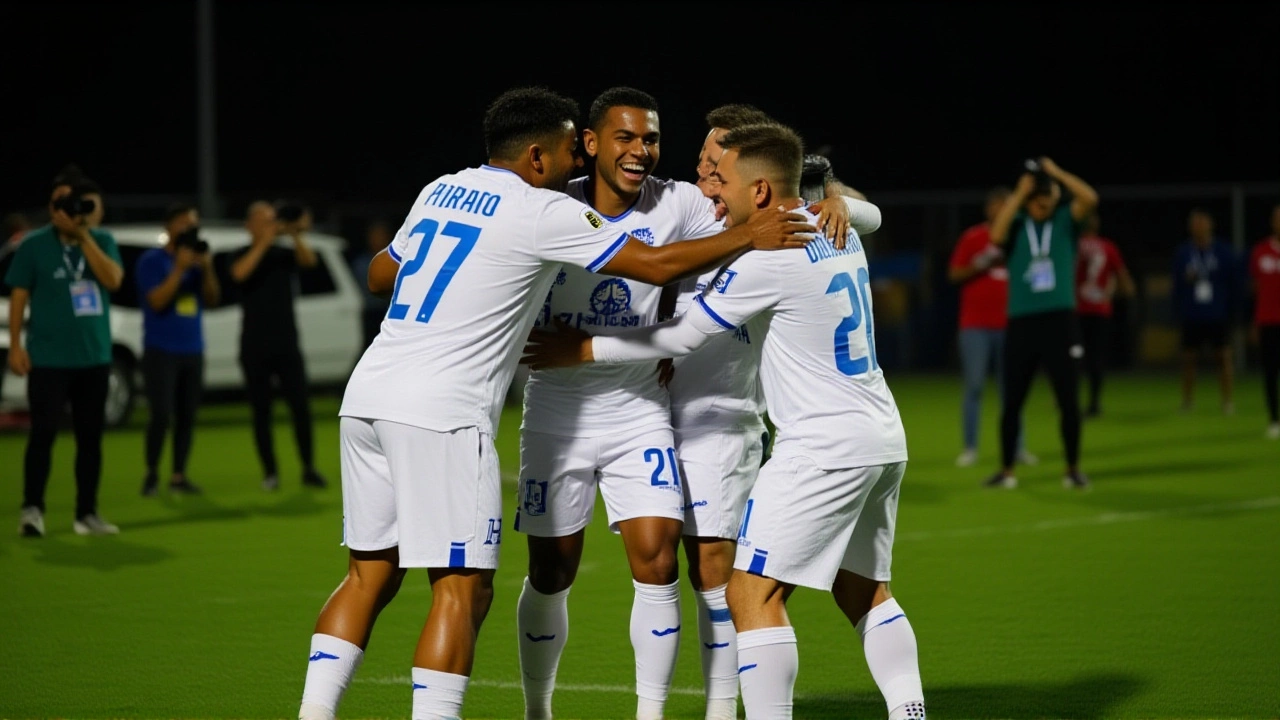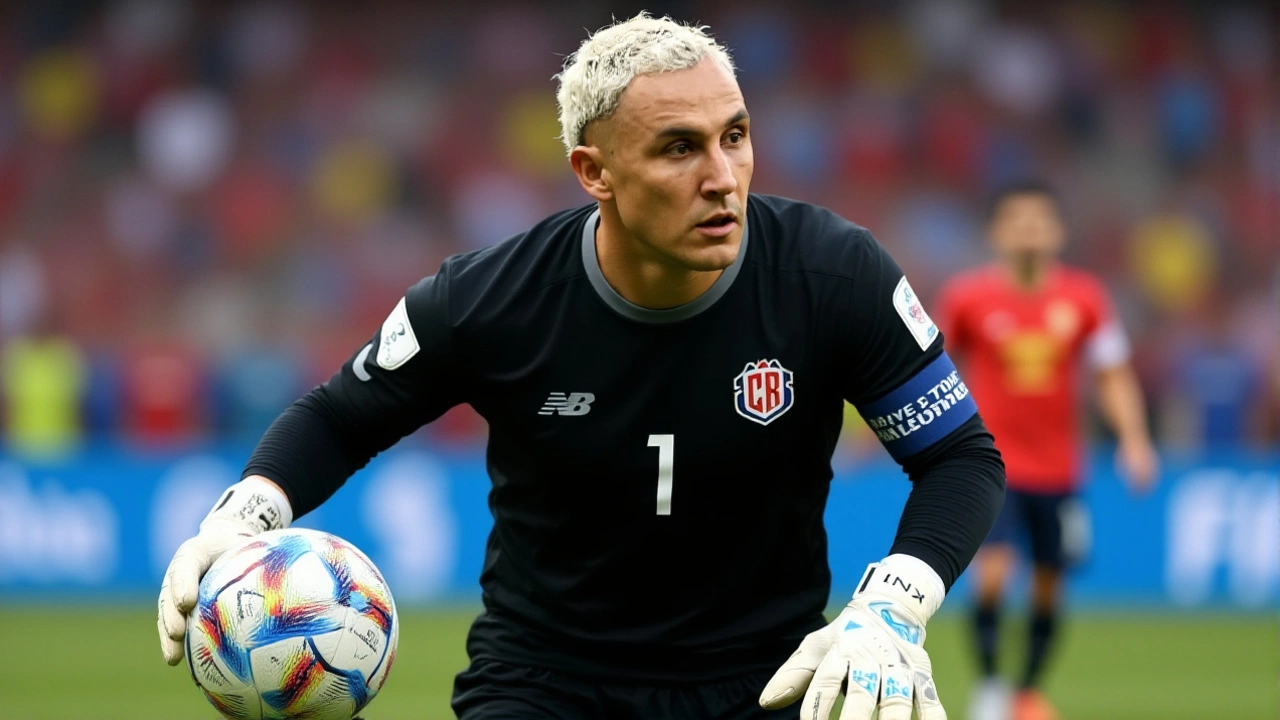The final whistle blew at Estadio Nacional de Costa Rica on November 18, 2025, and with it, the dreams of two Central American football nations vanished. Costa Rica and Honduras played out a tense, goalless 0-0 draw in their final CONCACAF 2026 World Cup QualifierEstadio Nacional de Costa Rica — a result that eliminated both from direct qualification for the 2026 FIFA World Cup. It wasn’t just a stalemate. It was a collapse. For fans who showed up in waves — over 35,000 packed into the San José stadium — it was a silence louder than any chant.
What Went Wrong?
The match began with a strange quietness. No fireworks, no early goals, just cautious possession and nervous tackles. At the 23rd minute, Honduras finally broke through with their first real chance — a curling shot from the edge of the box that forced Keylor Navas, the 37-year-old Costa Rican goalkeeper and PSG veteran, into a reflex save. The crowd exhaled. But that was as close as either side would come to breaking the deadlock. Navas, born in San José in 1987 and playing his final qualifiers for his country, delivered another heroic stop in the 46th minute, tipping a header onto the crossbar. The half ended 0-0. The tension didn’t lift — it thickened.Substitutions came early in the second half: Costa Rica changed at 57’, Honduras at 58’. But the energy didn’t shift. Players looked drained, not just physically, but emotionally. The weight of elimination had already settled in. Meanwhile, in the other group match, Haiti scored — a goal that sealed the fate of both Central American rivals. When the final whistle blew, fans didn’t boo. They just stared. Some wept. Others walked out slowly, scarves around their necks like shrouds.
Why This Matters Beyond the Scoreline
Costa Rica and Honduras are two of CONCACAF’s most storied football nations. Costa Rica stunned the world in 2014 by reaching the World Cup semifinals. Honduras, though less glamorous, has qualified for three World Cups since 2010. Neither made it to 2022. But 2026? This was supposed to be their redemption arc.Instead, they became victims of their own inconsistency. Costa Rica lost to Nicaragua and drew with Canada. Honduras lost to the U.S. and Canada. Both needed wins. Both got nothing. The expanded 48-team format didn’t help — it only made the race more brutal. With only six direct spots available in CONCACAF, and the U.S., Canada, Mexico, Panama, and Jamaica already secured, the door slammed shut.
And here’s the twist: neither team will likely get a second chance. The intercontinental playoff path is unpredictable, and the draw won’t be made until December. Even if they qualify for a playoff, they’d face teams from Asia, Africa, or South America — giants with more resources, more depth, and more hunger. The odds? Slim. The hope? Fading.

The Broadcast and the Audience
In the U.S., the match drew a quiet but dedicated audience. Paramount+ and CBS Sports Golazo carried the game live, while fans in Latin America streamed it via the CONCACAF Official App, YouTube, and Facebook Live. It wasn’t a ratings blockbuster — but for the diaspora, it was everything. Social media lit up with hashtags: #CostaRicaEliminated, #HondurasNoMas, #NavasStillGotIt.One fan in Los Angeles posted: “I’ve watched my abuelo cry after every World Cup since 1982. This time, he didn’t cry. He just turned off the TV. That’s worse.”
What’s Next for These Teams?
For Costa Rica, the path forward is messy. Their federation must decide whether to rebuild around youth — players like 19-year-old midfielder J. Brenes, who came on in the 62nd minute — or stick with veterans. Navas, likely playing his last international match, will retire from the national team. His legacy is secure: 150+ caps, two World Cups, countless saves.Honduras faces an even steeper climb. Their federation has been rocked by corruption scandals and poor management. The team’s captain, O. Galo, and midfielder W. Madrigal, both played their final qualifiers. Without structural reform, they risk becoming a footnote in CONCACAF history.
Both nations now turn to the 2027 CONCACAF Gold Cup — a consolation prize. But for fans, it’s not about trophies anymore. It’s about pride. And right now, that’s in short supply.

Behind the Scenes: The Rivalry That Broke
This wasn’t just a qualifier. It was a historic rivalry — one that dates back to the 1980s “Football War.” The buildup to this match was emotional. “For rivalry, for history, for posterity,” read BolaVIP’s headline. But posterity didn’t show up. Neither did goals. The rivalry, once a source of passion, now feels like a burden.Costa Rica’s defender Francisco Calvo, who committed a foul in the 39th minute, later said in a post-match interview: “We didn’t lose because of tactics. We lost because we stopped believing.”
That’s the real story here. Not the 0-0. Not the saves. Not even Navas’ final stand.
It’s about what happens when a generation of players — raised on World Cup dreams — realize those dreams were never theirs to keep.
Frequently Asked Questions
How did the 0-0 draw eliminate both Costa Rica and Honduras from World Cup contention?
Both teams entered the final matchday needing a win to climb into the top six of CONCACAF’s qualifying group. With the U.S., Canada, Mexico, Jamaica, and Panama already secured, only one direct spot remained — and Haiti’s win over another team in the group pushed them ahead. The 0-0 draw left Costa Rica and Honduras with just 10 and 9 points respectively, far behind the cutoff. Even with goal difference, neither could catch the teams above them.
Could Keylor Navas have changed the outcome if he hadn’t been playing?
It’s likely. Navas made two critical saves — at the 46th and 23rd minutes — that kept Honduras from taking the lead. Without him, Costa Rica might have fallen behind, forcing them into even more desperate attacks. But even with his heroics, the team lacked creativity and finishing. His presence delayed the inevitable, but couldn’t fix a deeper problem: a lack of attacking options and tactical cohesion.
Is there any chance Costa Rica or Honduras can still qualify for the 2026 World Cup?
Theoretically, yes — through the intercontinental playoffs, which will be drawn in December. But both teams would need to finish as one of the top two non-automatic qualifiers in CONCACAF’s fifth-place playoff, and then win two knockout matches against teams from Asia, Africa, or South America. The last time a CONCACAF fifth-place team made it to the World Cup was in 2018, when Australia (not CONCACAF) won the playoff. The odds are under 20%.
Why did the match air on Paramount+ and CBS Sports Golazo in the U.S.?
Paramount+ holds exclusive U.S. streaming rights to all CONCACAF World Cup qualifiers through 2026, while CBS Sports Golazo — a dedicated soccer network — broadcasts select matches on linear TV. The 0-0 draw was considered a low-profile game, so it was streamed only, not televised nationally. This reflects a broader trend: U.S. audiences are increasingly turning to streaming for international soccer, especially when the stakes are low for American fans.
What does this mean for future CONCACAF qualifying cycles?
This result may accelerate calls for reform. Smaller nations like Costa Rica and Honduras have long struggled to compete against wealthier CONCACAF members like the U.S. and Canada. With expanded World Cup slots, the hope was that more teams would get chances. But the reality is the gap is widening. Without investment in youth academies, coaching, and infrastructure, the same teams will keep missing out — and the region’s football identity will continue to erode.
How did fans react in Costa Rica and Honduras after the match?
In San José, fans sat in stunned silence after the final whistle — no chants, no boos, just empty streets. Social media flooded with memories of past World Cup runs. In Honduras, protests erupted outside the national federation’s headquarters in Tegucigalpa, with fans burning jerseys and demanding the resignation of officials. One fan held a sign: “We didn’t lose to the other team. We lost to ourselves.”

Author
Arlo Beaumont
Hello, my name is Arlo Beaumont, and I am a passionate chef with expertise in cooking and creating innovative recipes. I enjoy exploring various cuisines and experimenting with new ingredients to create delicious dishes. I love sharing my culinary knowledge and experiences by writing about recipes and cooking tips. My goal is to inspire others to develop their skills in the kitchen and to discover the joy of cooking.